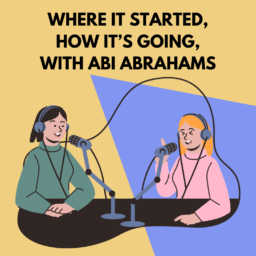
Let’s have a quick chat about Off-the-Job Training
Here’s the lowdown on off-the-job (OTJ) training. It’s a huge deal and a key part of any apprenticeship. But, it’s often overlooked due to its slightly complicated nature and people’s difficulty understanding what it actually is. The name really doesn’t help! In this article, we’re going to explain in clear and simple terms what OTJ is and is not, and generally clear the air on how it all works. Let’s see if we can do it in 500 words or less!
What is Off-The-Job training?
Off-The-Job training is dedicated time that must be set aside each week for an apprentice to study. Specifically, study and develop towards their particular role or related area of their apprenticeship. This time must be allocated during their working hours, not after! Again, the name confuses a lot of people to think you have to do it after work. It’d be better to call it something like Designated Workplace Study Time but they don’t have nearly as good a ring to it.
How much time should you get/give?
To figure out how many OTJ training hours are required you simply allocate 20% of an apprentice’s weekly contractual hours. For example:
- 30 hours per week = 6 hours of OTJ time;
- 40 hours a week = 8 hours of OTJ time.
However, there is a new rule that states that apprentices must complete a minimum of 6 hours each week. So, this means that if an apprentice works more than 30 hours a week, they only have to log 6 six hours, the rest is optional.
Side note: For those who are part-time or working reduced hours (under 30), the apprenticeship is stretched out in duration to fit the requirements.
How should OTJ be planned?
Before learners start their courses, employers and learners will sit down with their Training Providers to plan out the sorts of activities they’ll be doing during the programme. This is documented in the various contracts that everyone signs during the onboarding process. This plan is usually outlined and will demonstrate how much OTJ the Training Provider will supply and how much the employer and learner are responsible for.
Examples of Off-The-Job
A really common question Coaches get asked is what contributes toward OTJ training. The list is huge! Here is a list of the sorts of things that apprentices can do:
- Learning new job-related skills or tools by shadowing your team members;
- Taking part in training programs relatable to their apprenticeship;
- Having coaching sessions with their Coach;
- Attending workshops, training sessions, and webinars relevant to the apprenticeship, including training delivered by the Training Provider;
- Completing online learning that your Training Provider may provide;
- Engaging in “self-guided” learning, like reading articles, blogs, and books; or watching instructional videos on Youtube or Udemy, etc;
- Getting hands-on experience in new areas of marketing;
- Working on your portfolio;
- Attending conferences, meet-ups, and webinars connect to your apprenticeship;
- Tackling written assessments, assignments, and projects.
And the list goes on and on. Basically, it’s anything that could seen as some sort of training or development toward skills related to an apprentice’s job.
What are the benefits of OTJ?
- OTJ training provides hands-on experience, allowing learners to acquire practical skills and knowledge directly applicable to their job roles;
- Learners can apply what they learn in real-time to their daily tasks, making the learning process more relevant;
- As OTJ training is specific to the job at hand, it can lead to increased efficiency and productivity;
- OTJ training is often more cost-effective compared to traditional classroom-based training. It reduces the need for external courses and minimizes the time away from the workplace;
- Employers can tailor OTJ training to meet their organisation’s specific needs and goals, ensuring that employees acquire the exact skills and knowledge required for their roles.
The way we look at it is like this, for learners, you’ll likely never get as good an opportunity to learn and develop again. Sure, companies invest in CPD (Continual Professional Development), but they won’t likely give you this much time to learn each week as a full-time employee.
How and why is OTJ tracked?
As part of the requirements of any apprenticeship, it is vital that an apprentice’s OTJ hours are tracked and logged regularly. Before a learner can go through Gateway and EPA (End-Point Assessment), all of the required OTJ hours must be accounted for. If they’re not, learners cannot enter Gateway until they have been. This catches a lot of people out!
Most Training Providers will utilise online systems for logging OTJ training and it is highly recommended that all learners log into these systems at least once a week. If they don’t they’ll fall behind and this puts pressure on the remainder of their time on programme as they’ll have to compensate for those missing hours.
Additional considerations for employers
- A learner’s time off doesn’t affect those dedicated six hours of off-the-job training; it only applies to work hours;
- The main goal of OTJ is to help apprentices get top-notch training to become really good at their jobs;
- If off-the-job training happens after work hours, like industry events in the evening, it should be balanced out with the usual work hours or compensated;
- If an apprentice needs extra training after failing their EPA, it doesn’t count as part of the minimum six hours a week needed before they can do the final assessment;
- The six-hour rule is mostly for keeping records. Once that’s done, the training can still be quite flexible;
- The amount of training needed depends on how well the apprentice does during their initial assessment, which might mean they end up needing more than six hours a week.
And scene
There you have it. A boiled-down guide to Off-The-Job training and many of its factors. I went over the 500-word count, but hey, forgive me. Anyway, hopefully, this helped clear up any confusion around the subject. If ti did, be sure to tell your colleagues or fellow apprentices about it and share it on social media. Go on, you know you want to. If however, you have any further queries or questions, feel free to contact us via this website and we’ll try to answer any questions you may have.
















